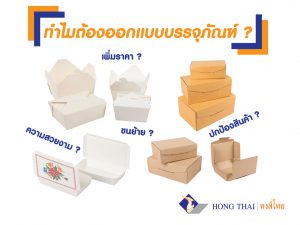In the past, most of the packaging materials used were made from natural materials, such as using leaves, shells, or fruit peels to store food, or bamboo to create containers for water. Later, natural materials were developed into food and beverage packaging used in daily life, such as sewing banana leaves into cones or other shapes suitable for use.
Development and Production of Packaging
About 5,000 years ago, humans began to use pottery for food and beverage packaging, which made it easier to store food. This led to the exchange of goods and the production of pottery packaging, which was shipped from Greece to Italy around 2,000 years ago, and later expanded globally.
Around 1,000 BCE, glass packaging began to be produced, with Egypt being the leading country in glass production. Around 500 BCE, the glass-blowing technique was developed for creating glass packaging for food and beverages, a practice that continues to this day.
Paper products started being used around 600 CE in China. However, during that time, paper was not used for wrapping products. The first paper production in Europe occurred in northern Valencia, Spain, by Muslim Spaniards. Paper was then transformed into paper bags between 1618 and 1691, with 800 million paper bags being used in the United States by 1875. The cutting, folding, and printing processes for transforming paper into cardboard boxes became popular around 1880.
Metal packaging began with the discovery of tinning metals through the Hot Dip process by the Bohemians around 700 CE, which led to the production of tin cans for tobacco packaging found in England. This was later developed into food and beverage packaging using foam, aluminum, plastic, and plastic bottles in succession.
Packaging and Environmental Issues
As the demand for food and beverage packaging increased, so did the production of consumer goods. Technological advancements led to an increased demand for convenience, which in turn created environmental problems related to packaging waste, such as the greenhouse effect, which causes rising temperatures, a global issue. As a result, efforts have been made to find solutions for the disposal of packaging after use, focusing on the selection of biodegradable materials to address environmental concerns.
Packaging factories play a crucial role in managing the environmental issues caused by food and beverage packaging. Hong Thai, a Thai brand with over 40 years of experience in packaging production, recognizes the importance of environmental issues. They have innovated the production of packaging using natural, biodegradable materials that are environmentally friendly to create coffee cups, drinking cups, cardboard boxes, and other packaging products that are safe for consumers.
Therefore, entrepreneurs who order or produce food and beverage packaging from Hong Thai can be confident that our products will support your goods and services in meeting consumer demand, as they are biodegradable and environmentally friendly.






